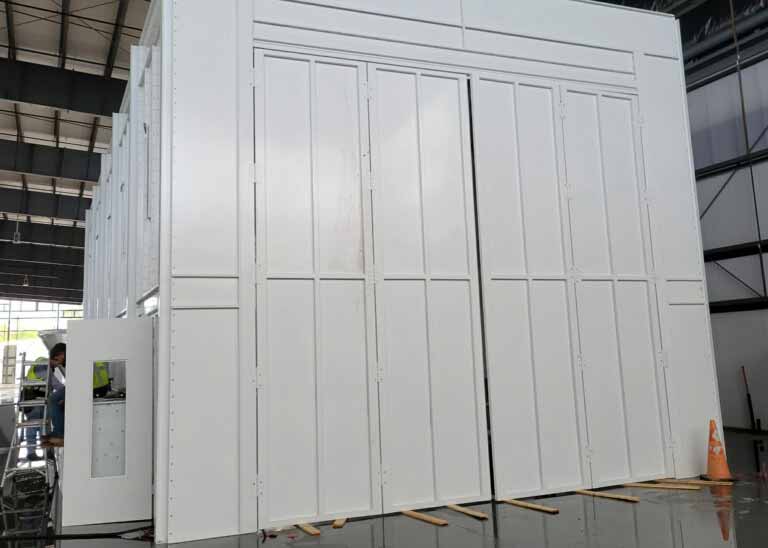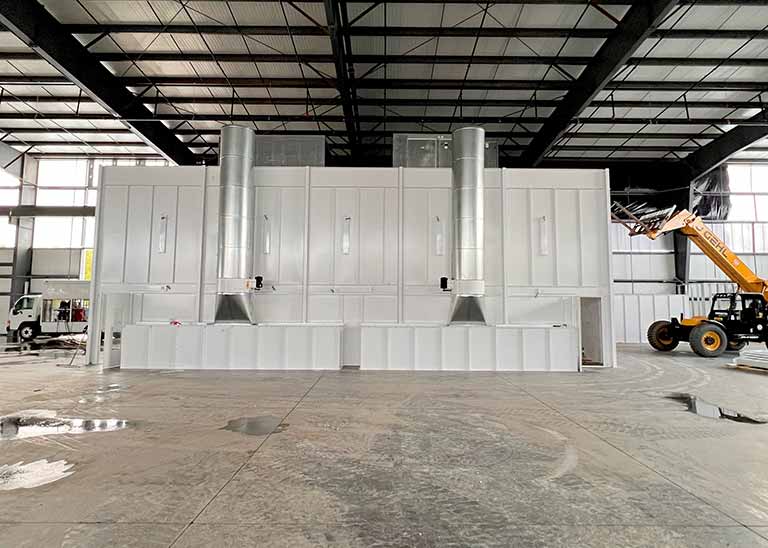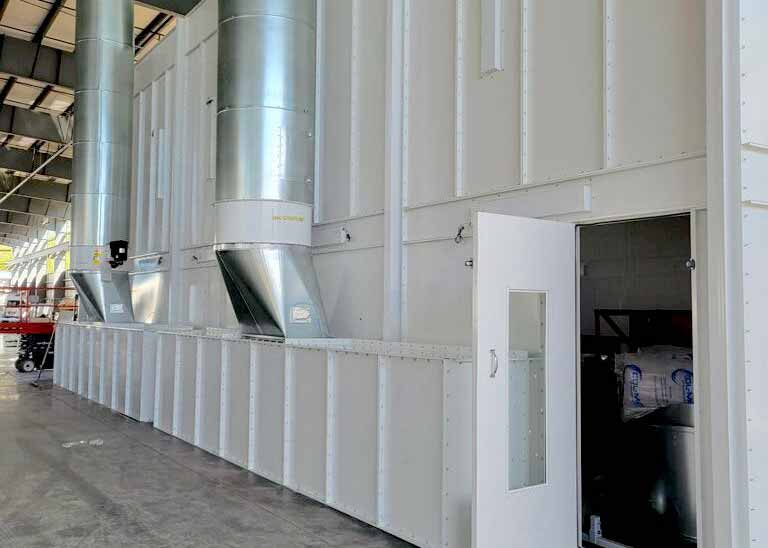Deciding which airflow pattern is best for your paint booth will be one of the greatest decisions you will be called to make for your paint shop. This decision will either make or break the effectiveness of your unit. The ideal airflow will significantly improve the overall quality of your facility’s finishes, and boost the productivity of your spray booth and even its overall efficiency. When it comes to quality and efficiency, you will need a setup which can act as a platform that will deliver consistent top-quality work at all times. As for productivity, you will need an airflow pattern that will enable your team to carry out their work quicker and more efficiently. This, in turn, will substantially minimize your paint shop’s production time and wastage. Finally, it is important to have a spray paint booth airflow pattern that will sufficiently protect your team against toxic overspray and the volatile compounds it contains.
In all these critical considerations, downdraft units amply meet such airflow requirements. This makes them more than a suitable solution if you wish to greatly reduce touchup expenses and streamline your paint facility’s production time. Best of all, downdraft units are widely acclaimed for delivering the finest paint booth airflow pattern for containing overspray and other contaminants.
However, this sort of airflow does not come on the cheap. A proper downdraft setup requires extensive concrete work for the mandatory exhaust pit and tunnel systems. If this option isn’t to your liking, you can settle for a raised steel basement that comes complete with a drive-up ramp. Both of these downdraft spray booth solutions are very costly and time-intensive to construct. Here is where the side downdraft spray paint booth comes into the picture. Essentially, this sort of unit happens to be the least expensive option of the downdraft variety to build upfront.
It is well noted for delivering the same superior airflow pattern of the full downdraft unit less the exorbitant costs and prolonged time needed to construct one.


As noted earlier, when compared with the standard downdraft spray paint booth, you won’t be compelled to undertake any concrete work to install exhaust pits and tunnels. Neither will you be forced to install a raised steel basement in your paint facility. All this without in any way sacrificing on the overall quality of your unit’s finishes and overspray and contaminants control capabilities. This means you will be able to save much on the upfront costs of constructing a side downdraft paint booth in your shop.
On the downside, this sort of unit necessitates a bigger footprint since it requires more exhaust fans, ductwork and roof penetration than most other alternatives. Also, the exhaust plenums which are situated on the lower side walls increase the unit’s overall width. When compared to the cross-flow spray booth, the operational costs of using a side downdraft unit are a bit higher. This may be attributed to the latter’s whole ceiling filtration system.
The side downdraft spray paint booth is commonly utilized in a wide variety of applications. Among many others, this includes the aerospace and defense, automotive, manufacturing and industrial, heavy equipment, fleet refinishing, marine and transit and rail sectors. In the particular case of aircraft finishing, this solution is very popular due to its effective heat dispersion and superior overspray containment capabilities by providing sufficient airflow in large spaces. As for large equipment, the side downdraft unit is an excellent solution for accessing all the benefits of a full downdraft unit without having to construct a pit system rated for heavy equipment. Iin the automotive refinishing industry, it is a popular option for smaller refinishing shops where an exhaust pit isn’t practical due to the location of the paint shop.

ZPar International is a leading manufacturer of high quality side downdraft paint booths together with other units that incorporate other popular airflow patterns. We also offer quality powder coated paint booths and other spray booth accessories such as curing ovens and abrasive blasting enclosures, cabinets and other related equipment.